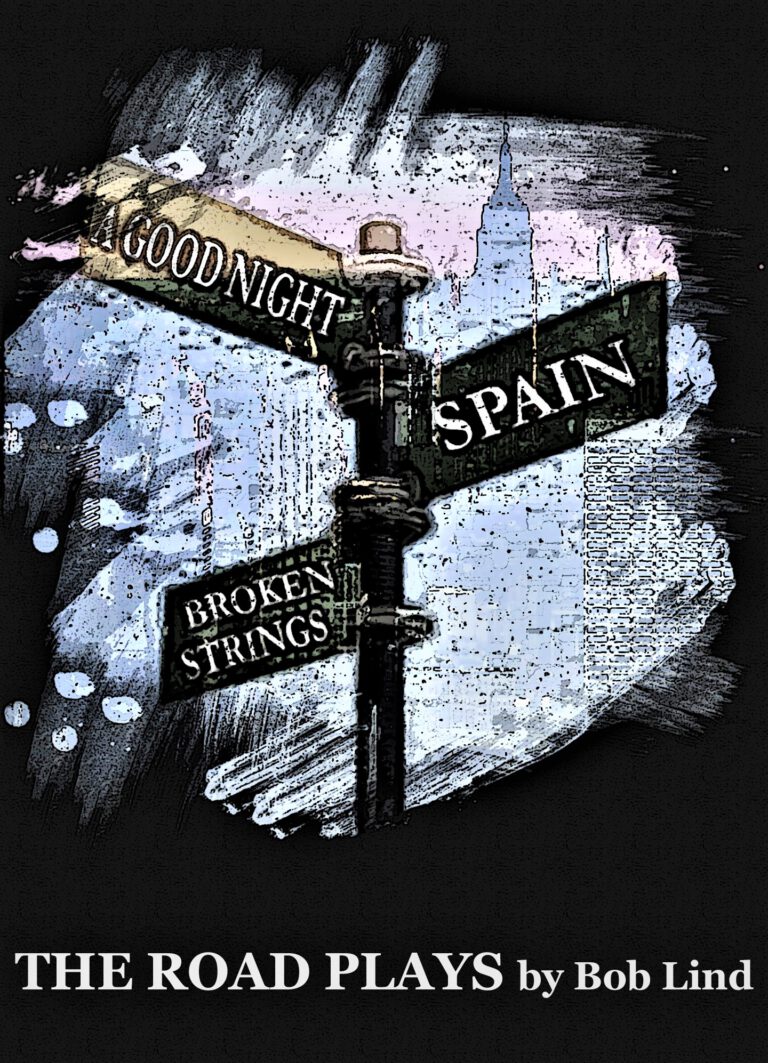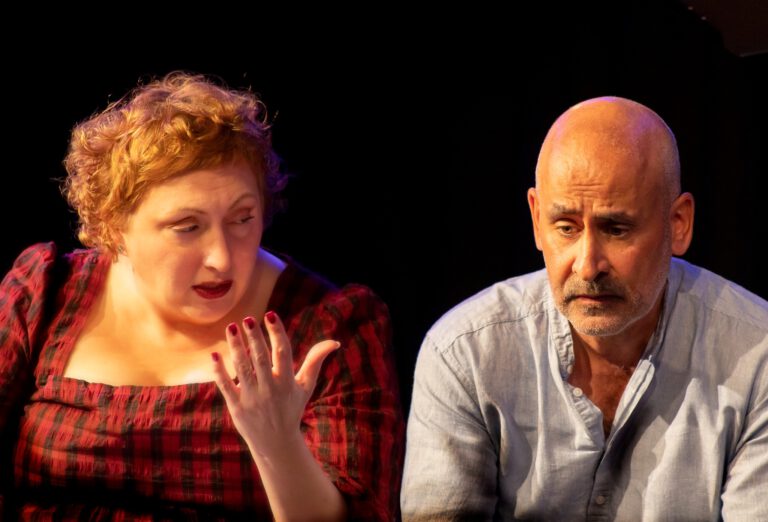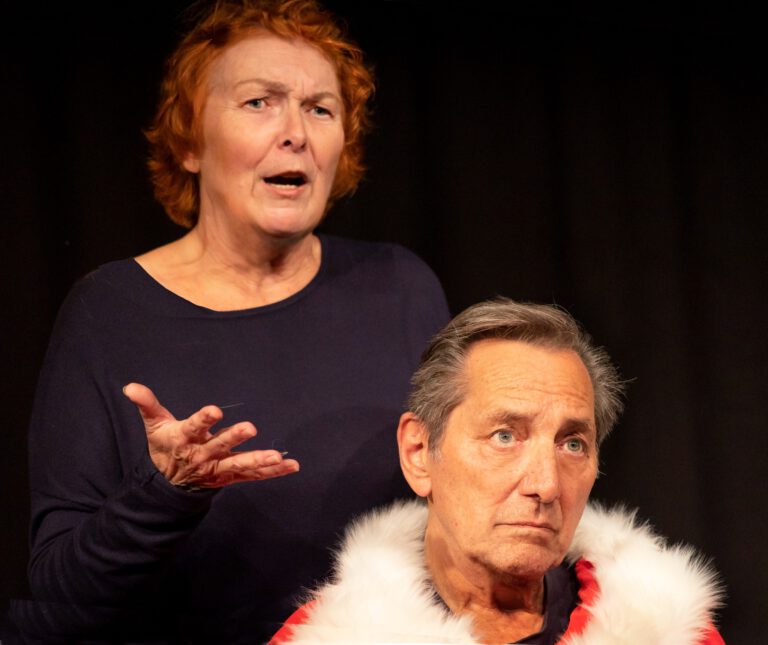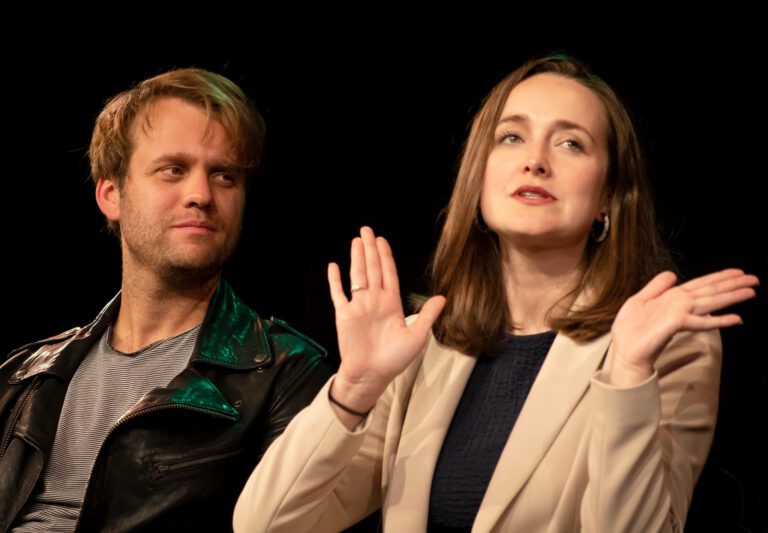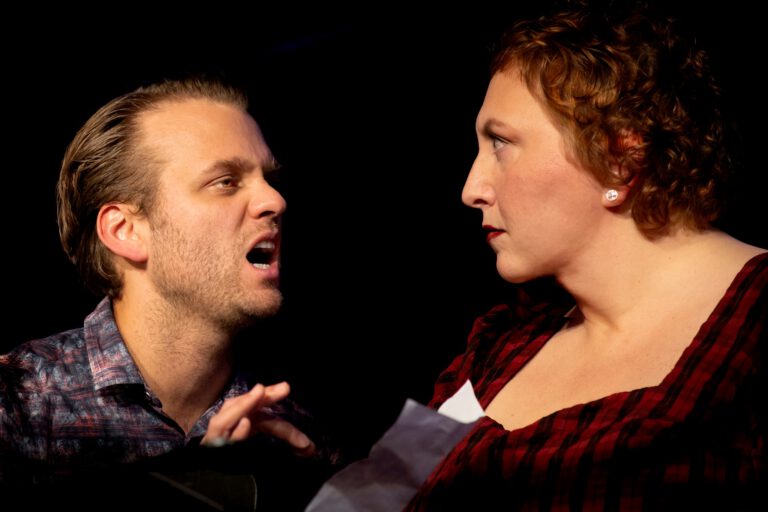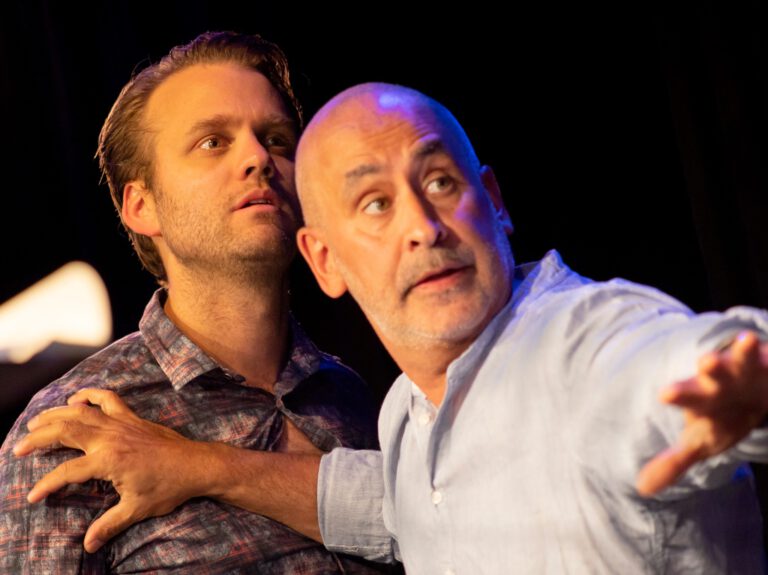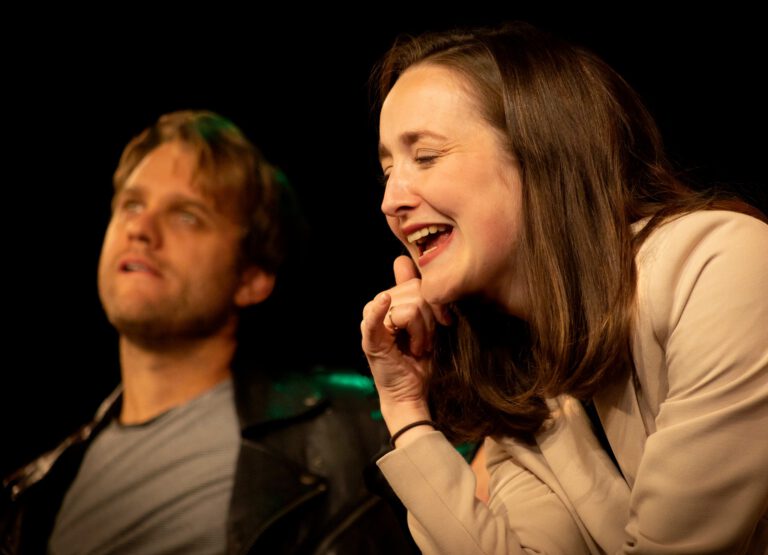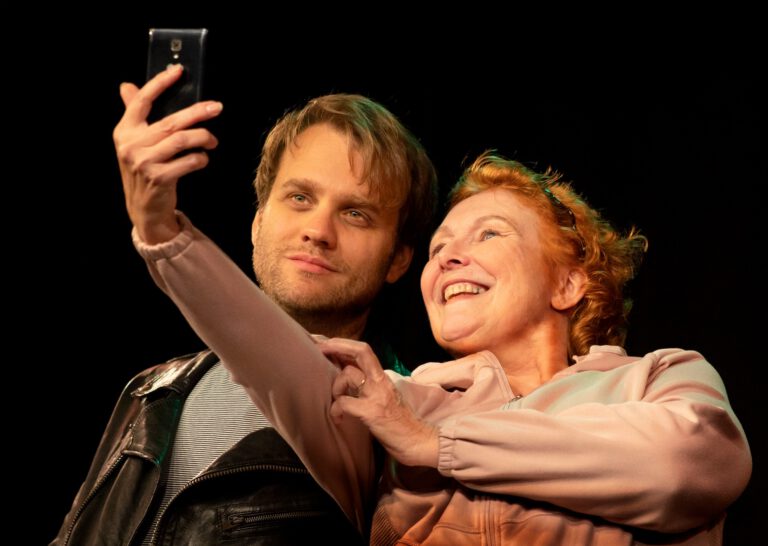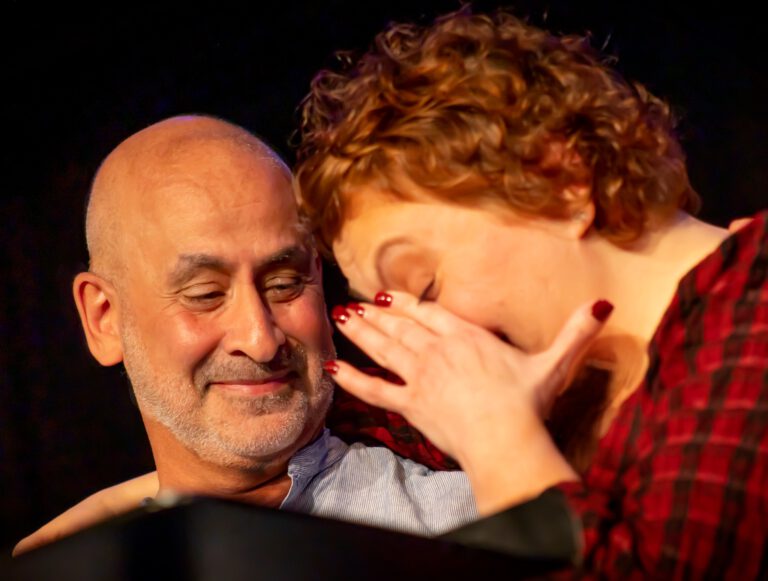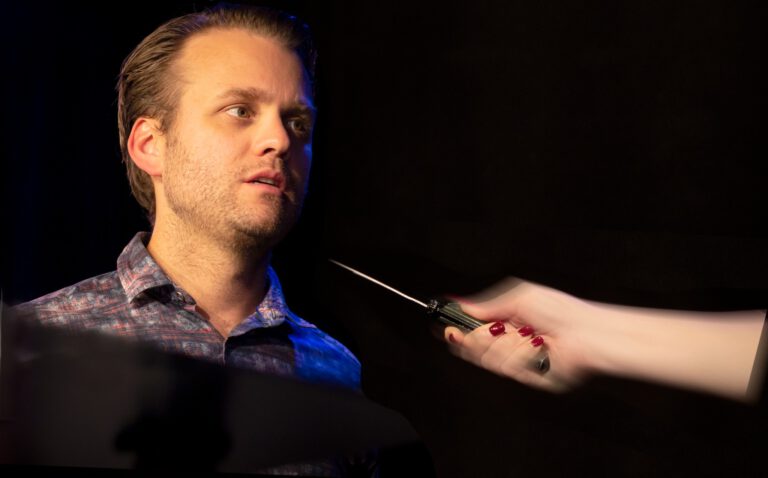
- Diese Veranstaltung hat bereits stattgefunden.
NEAT: THE ROAD PLAYS by Bob Lind (eng)
17. Mai. 2024/20:00
THE ROAD PLAYS by Bob Lind
/ Gastspiel New English American Theatre
17. MAI
Fr, 20:00
THE ROAD PLAYS („A Good Night,“ „Spain,“ and „Broken Strings“) are three thematically linked pieces about the joys, sorrows and dangers of life on the road.
Bob Lind is an iconic American singer and songwriter. A living legend, he is considered a pioneer of folk rock thanks to his eloquent, emotionally moving compositions, in which he incorporates elements of popular music styles that of the late ’60s, such as psychedelic and sunshine pop.
His debut album DON’T BE CONCERNED, which included the international hit ELUSIVE BUTTERFLY, was released in 1966 and reached the top ten in both the USA and the UK. This title – like many of his other compositions – was recorded by more than 200 renowned singers, such as Cher, Glen Campbell, Johnny Cash, Aretha Franklin, Dolly Parton, Eric Clapton, Nancy Sinatra, the Four Tops and Petula Clark.
Although his discography only comprises a handful of studio albums, the musician has inspired a number of well-known contemporary colleagues, including British indie pop musician Richard Hawley and Jarvis Cocker, who adapted his American role model to the Pulp song BOB LIND (The Only Way Is Down.
In the early 1970s, Bob Lind left the music business behind but continued to write poetry and discovered his talent for writing novels and screenplays as well as stage plays. His theatre work has received a great deal of attention and several awards. At the suggestion of his supportive friend Arlo Guthrie, Lind returned to the stage in the mid-2000s. His shows were well received, which is why he soon decided to release new records. In 2013, Bob Lind was inducted into the Colorado Music Hall of Fame along with Judy Collins.
Karten: 12 EUR / ermäßigt 9 EUR
Weitere Veranstaltungen von NEAT im Theater am Olgaeck:
There are no upcoming events at this time
…
Robert Neale Lind was born in Baltimore, Ohio on 25 November 1942. His parents separated when he was five and his mother remarried a master sergeant in the Air Force. After several years of constantly moving home, the family settled in Denver, Colorado.
“When I was in the 7th grade I discovered rhythm and blues,” Lind recalled when I interviewed him in 2007. “Before that, I used to listen to Gene Autry, Tex Ritter and Burl Ives, particularly. Burl Ives shaped my whole life. I knew what a guitar was. I knew you kinda raked across the strings with a pick and made noises. But here was a guy who was playing with his fingers, singing about mysterious things, like bats with leather wings and cowboys dying in the streets of Laredo. Oh man, I’d never heard anything like it.”
When Lind was 10, his parents bought him a guitar. He took a few lessons, but lost interest. “A few years later I began to realise that I wasn’t a particularly handsome guy, I wasn’t real smooth, but the guys that played music got all the hot girls. I thought, ‘Me for that!’ But somewhere along the line, I actually got into music for its own sake.” Forming a duo with his pal Jerry, Lind’s first paying gig was at a used car lot. “I played guitar and we sang R&B. Now they call it doo wop but nobody called it that then. It was rhythm and blues – dark and dangerous. We got all the hot dogs we could eat. Then we formed a band and played the teen clubs, where you could work underage.”
After graduating from high school, Lind enrolled at Western State College in Gunnison, Colorado, where he studied theatre arts. “I wasn’t really very serious about college. I was serious about playing music, learning how to finger-pick. I would wake up in the morning, take a bunch of uppers and coffee, and write maybe five or six songs a day. Then I’d go hear somebody play or have a gig myself. I’d come back, stay up most of the night and write more songs. Most of my songs from that period of time came from that line between sleep and wakefulness. That’s where ‘Elusive Butterfly’ was written. This was during the folk boom. There were two schools around then. There was the Kingston Trio, the Journeymen and Peter, Paul & Mary – these very slick guys who wore the striped shirts. Then there was a whole undercurrent, like Judy Henske, Josh White and Phil Ochs. And Dylan, of course. I played a place called the Analyst quite a bit. The first guy to hire me, Al Chapman, owned the place. They had things on the menu like the Freud Burger and the Psycho Salad. I still credit Al Chapman with discovering me. Al taped one of my sets and made a little reel-to-reel of five of my songs. He suggested that I take the tape around to the record companies.”
By 1964 the folk scene had started to dry up in Denver, but was still thriving in San Francisco; Lind headed there. “I was scared to death, because I didn’t know if I could make it there. I didn’t know if I would be able to get work, but in no time at all I was earning … I’m not sure if you’d call it a living. I was holed up in a crummy little hotel where people would die on a daily basis. They’d be hauling stiffs out of there every day – old guys dying lonely deaths in front of the communal TV, or junkies overdosing. It should have depressed me, but I found it romantic. I was maybe 21. I felt like Kerouac, you know. I was there for about three months before I moved on.”
Lind left his belongings with a friend and got on a plane down to Los Angeles to shop around the tape Al Chapman had made for him. “Liberty Records had just bought a jazz label called World Pacific and there was a guy running it named Dick Bock – a strange guy, eats yoghurt, stands on his head, a real free thinker. Bob Dylan was very popular at the time with ‘Like A Rolling Stone’ and the Byrds were happening, so they were looking for a folk rocker, a poet-with-guitar. I didn’t know that. I just went to Liberty because it was the first on my list. I gave them this tape and they said, ‘Yeah, we’d like to sign you’. I was amazed. It was that easy. They signed me as a songwriter to their publishing company, Metric Music, and as a recording artist. I think they were much more excited about my songs than me as a singer.”
Meanwhile, noted arranger Jack Nitzsche was looking for material for artists he was producing. Lenny Waronker, the head of Metric Music, called Lind in to play Nitzsche some of his songs. “I thought that was the dumbest idea I could imagine. I knew who he was and I even had a copy of his “Lonely Surfer” album. This guy is classically trained. This guy is Phil Spector’s right-hand man. He writes those beautiful string lines. This is too crazy! What was a brilliant, classically trained arranger with his melodic scope going to hear in my twangy, folky little songs? So with great trepidation I sat down and plunked out a couple of my folky three-chord tunes. He turned to Lenny and said: ‘You finally got yourself an honest writer.’ I hadn’t thought of myself as honest. I just wrote what I felt. So I played a few more and he said, ‘Boy, this guy’s really good.’ Jack didn’t choose any of my songs for the acts he was producing that day, but I thought of our first meeting as a good ego-boosting experience.”
When it came time to record, Dick Bock was assigned to produce, but things didn’t work out. “There were some technical difficulties that had nothing to do with the music itself. So they were trying to find another producer. They were talking to Chad Stuart and Sonny Bono. Then they said, ‘Let’s try Jack Nitzsche’. Lenny remembered that he had expressed an interest and asked him if he’d like to cut me. Jack said, ‘Yeah.’ He came over to my place, a terrible little $50-a-month apartment on Hawthorne. He looked at this place and said, ‘Man, you can’t create here in this awful place. Come and stay at my house.’ I’d only met him two or three times.”
Lind accepted Nitzsche’s offer and moved in to his house in the Hollywood Hills. Nitzsche and his wife, Gracia, were separated at the time. “It was an Odd Couple kind of deal. Jack and I both loved to drink and to get high. We had a beautiful friendship. He turned me on to music I’d never even heard of before. Fred Neil, Bulgarian folk music, all these jazz guys, classical music: Wagner – he loved Wagner! He had this wide cosmopolitan taste that spanned everything. Even when Gracia came back with the baby – and a more wonderful woman no one has ever met – he never kicked me out. Gracia treated me like a son, even though there wasn’t much difference in our ages. She was wonderful – aces as a person and as an artist. Gracia tended to crash early and when she went to bed, Jack and I would get drunk and put on Ray Charles or Otis Redding and cry like big maudlin babies.”
Lind’s first session with Nitzsche yielded ‘You Should Have Seen It’, ‘Truly Julie’s Blues (I’ll Be There)’, ‘Elusive Butterfly’ and ‘Cheryl’s Goin’ Home’. “‘Elusive Butterfly’ was five verses long. I wanted to do all five verses. Jack said no one would listen to a song that long, and I should only do two. Of course, he was right. Hal Blaine was the drummer. He was the drummer on every session done in LA in 1965. After we’d finished these four, the company was looking for a single. We both favoured ‘Cheryl’s Goin’ Home’. So we released that and – just to be safe, so we wouldn’t get split airplay – we put what we thought was the weakest song, ‘Elusive Butterfly’, on the other side. But the record went nowhere. There was no interest in it at all. Then a disc jockey in Florida turned it over and started to play ‘Elusive Butterfly’. It started to catch on, one market, then another.”
A month after the record’s release, Lind and Nitzsche returned to the studio to cut the eight tracks that would complete the “Don’t Be Concerned” album, released in February 1966. ‘Elusive Butterfly’ entered Billboard’s Hot 100 in January, eventually peaking at #5 in March, by which time ‘Remember The Rain’ / ‘Truly Julie’s Blues (I’ll Be There)’ had been released as Lind’s follow-up single.
“Things were very fast then. I think the “Don’t Be Concerned” album took about three sessions. The two World Pacific albums were recorded so close together that I kinda lump them both together in my mind. Later on I learned that all of these famous people had played on my sessions, like Carol Kaye. I didn’t know who Carol Kaye was! I didn’t know Henry Diltz was playing banjo, or Larry Knechtel was on keyboards. I do remember Leon Russell. He scared the hell out of everybody. He was a strange dude, with long, long hair, even for those times. He was quiet and scary, but he played great piano.”
Divided radio play resulted in ‘Remember The Rain’ and ‘Truly Julie’s Blues (I’ll Be There)’ each reaching the charts, albeit at only #64 and #65, respectively. Meanwhile, ‘Elusive Butterfly’ had taken off in Britain, prompting a promotional visit.
“I loved being in England. My managers, Greene & Stone, brought me over. There was a guy named Val Doonican who cut ‘Elusive Butterfly’ too. There were people who thought he was stealing food out of my children’s mouths, but I felt that when you write a song, you can’t claim ownership of it. Val Doonican’s version was different from mine, but I kinda liked that. I had a wonderful time in England. I met Eric Burdon, Paul Samwell-Smith, Keith Relf and a guy from the Pretty Things. He came up to our hotel one time. There were about 15 people in our room and we were all smoking this hash. He told us all this long improvised fantasy story. I thought what a great world this guy lives in!”
Bob Lind and Val Doonican each reached the Top 5 with ‘Elusive Butterfly’ in the UK, where Lind’s follow-up, ‘Remember The Rain’, was also a modest hit, as were Keith Relf’s recording of ‘Mr Zero’ and Adam Faith’s version of ‘Cheryl’s Goin’ Home’. “‘Cheryl’s Goin’ Home’ turned out to be my second most-recorded song. Cher recorded it, and the Blues Project, Noel Harrison and the Cascades did it. A group called the Rokes did an Italian language version, and one of ‘Remember The Rain’.”
May 1966 saw the opportunistic release of an album titled “The Elusive Bob Lind”. “I was 17 when I made that album. Some of my friends wanted records, so I got nine of them together, they put in $12 each, and I went and got an hour of studio time. I took my guitar and recorded these 12 songs – all acoustic, just me and my guitar – all in an hour. I got an acetate copy for everybody and thought that was the end of it. Jump ahead to Los Angeles. ‘Elusive Butterfly’ becomes a hit and my managers get a letter from Verve Folkways saying that they’d just bought these masters. The next thing I know, I hear this album that has strings, drums and all these other instruments, all dubbed over me and my guitar. They didn’t even get the titles right, and credited me with writing songs like ‘The Times They Are A-Changin’’ and ‘Song Of The Wandering Angus’. I suppose I should be flattered that some people like the album, but it’s a terrible piece of shit.”
With a Top 5 single to his name, Lind found himself in demand for TV appearances, but it was not the type of work he enjoyed. “My managers had a certain view of my career. Their decisions for Sonny & Cher were great. They were pop singers; they didn’t care. The kind of music that I wrote was intimate stuff. It was about feelings that are not general commodities that can be packaged. They were wrong for lip-sync shows with go-go dancers jumping around. It made no sense. This wasn’t the course that I was trying to follow. Right then I started hating the business. I had gotten bent and warped and taken so far away from the direction I was trying to head.”
In the spring of 1966 sessions began for his second World Pacific album, “Photographs Of Feeling”. When Verve released a single from their LP, World Pacific responded with ‘I Just Let It Take Me’ from the new sessions. A further Verve single was countered by ‘San Francisco Woman’ on World Pacific, but it too failed to reach the charts. The “Photographs Of Feeling” album, released in August 1966, was the last record Lind would make with Nitzsche.
“Jack had his demons. If I said something that struck him wrong, he would suddenly go off on me about ‘being a fucking star’. At that time, far from being ego-ed out, I was constantly scared shitless, but he seemed very threatened by the success of the records we had made together. He was a hard man to figure out. It didn’t particularly end well with our friendship. Over the next few years, we’d see each other every once in a while and get close again. Then things would get nasty and we’d float away into our separate worlds. I’ll never forget Jack’s generosity, his belief in my music, his love of my music. When I think of him today, I can’t think of anything but that patience and generosity of his, and the fact that he had confidence in me way before I had any in myself. Jack was a strange guy. I miss him.”
The singles ‘It’s Just My Love’ and ‘Goodbye Neon Lies’, both produced by Tommy Oliver, were Lind’s only other releases over the next five years. Disenchanted, he moved to Santa Fe, New Mexico. “I was a drunk. I was an abuser of drugs. That wasn’t Jack’s influence. He and I were just similarly inclined. I just wanted to go the desert and get my head straight, but Santa Fe ended up being the place where I did some of my worst drinking and using. So go figure. But while I was there I wrote the songs for an album.” Recorded with arranger Jimmy Bond and producer Doug Weston, the “Since There Were Circles” album was released by Capitol in 1971. Not long afterwards, Lind quit the music business and settled in Florida.
“I just got more and more disgusted and sick of these people in suits who had no feeling for music, but were making all the musical decisions. It wasn’t that I nobly made the decision that, ‘None of that for me anymore’. It was a mutual decision. The music business and I both had distaste for each other. I was a pain to work with. Drugs and alcohol will do that to you. I felt like a fraud. I felt that I wasn’t as talented as people said I was. All that’s completely turned around with sobriety. I haven’t drunk and I haven’t used since 1977. Now I honour my audience and I honour my music. I see that there is value in what I do. And my music has improved with sobriety.”
Lind never stopped writing and worked for a while for Weekly World News. “It was a fun paper where you could dream up stories about Big Foot, witches, UFOs and space aliens. You get paid to make things up all day. By night, I’d write literary short stories. One of them was called Emmett’s Last Day, about a guy in the Everglades. Another was called Nuisance Calls. A screenplay I wrote won the Florida Screenwriters Competition in 1991, I’ve written five novels and I’ve had plays produced. One of them won the Bronze Halo Award. I just like to write. But music never left me. I continued writing songs and once in a while I played, if the vibe was right. I did the Indian River Festival with Arlo Guthrie, who’s an old friend. There are over 200 cuts of my songs – Nancy Sinatra, Cher, Aretha Franklin, Dolly Parton, Marianne Faithfull, Richie Havens, Eric Clapton, Carmen McRae, Johnny Mathis, the Turtles, Glen Campbell – so technically I don’t have to work anywhere I don’t wanna work.” Eventually his desire to make music returned. In 1998 he sold his Gold Wing motorcycle and bought something more dangerous, a tenor sax.
“I had never learned how to read music. I didn’t know chords. I didn’t understand music theory. It had been all instinct with me. I decided that when I learned the saxophone I was gonna learn it the right way. So I took lessons. I learned how to read music and I learned how to make chord charts. I learned why a major seventh is a major seventh, for example – what a D minor flat nine is. I made a little album for my friends, but I wasn’t much of a saxophone player. I was passable, but to be a good sax player takes years – more years than I really had to devote to it. But that’s really the thing that got me back into music. My melodic scope started to open and I started to write more jazz-oriented songs. I thought people had to hear these things, so I started gigging again.”
Signs of Lind’s cult following became apparent in 2001 when Britpop band Pulp recorded a song titled ‘Bob Lind (The Only Way Is Down)’. “What’s great about Britain is that there is a whole new generation of people who are interested in older artists, not just because of what they did in their prime, but what they’re doing now. About a third of the people who visit my website are from the United Kingdom. I think young people in England pay more attention to the history of music than people in America do. I’m baffled by the quality people who talk about me – Jarvis Cocker, Richard Hawley and Sean O’Hagan from the High Llamas, and that delightful madman, John Otway.” Closer to home, guitarist Jamie Hoover of US group the Spongetones released “Lind Me Four”, a CD EP of Lind compositions. Long-time fan Hoover subsequently played on “Bob Lind: Perspective”, a concert/documentary DVD produced and directed by filmmaker Paul Surratt.
A frequent live performer, but no fan of the recording process, Lind made some of his recent compositions available on a self-released CD, “Live At The Luna Star Café”. A new studio album, “Finding You Again”, eventually appeared here on Ace’s Big Beat label in 2012. “I’ve written at least 300 songs since my last LP came out. For 41 years I’ve known I have to get ‘product’ onto the market. Over those years, I talked to dozens of producers. Some, I knew right away were wrong for me. Others seemed right for a while, but egos (theirs and mine) crushed the trust needed for the fragile producer-artist relationship.”
Fortunately, Lind found a dependable producer in Jamie Hoover. “It started with me sending him a god-awful piano demo of ‘Finding You Again’. I love the song but the demo sucked, as all my self-made demos do. A week later I got an mp3. ‘Stunned’ is an understatement. Somehow he had transformed that piece-of-shit demo into a pulsing, exciting representation of the song. I kept playing it over and over, marvelling at how he had Frankensteined it to life. I sent him a simple demo of ‘Maybe It’s The Rain’. Again, he found the soul of the song, adding those tasteful electric guitar, bass and string lines. After he repaired and rejuvenated ‘Exeter (The Wedding Waltz)’, I called him up and said, ‘Who are we kidding? We’re making an album here!’. His love for my music brought out the best in his production artistry. He constantly sought to bring my ideas to life in his unique and creative way. All of the songs are new except ‘May’ and ‘How The Nights Can Fly’, both of which are over 30 years old – along with a first for me, the authorised release of a song I didn’t write. I’m genuinely happy with what we’ve done.”
His voice and songwriting undiminished by time, Lind still gigs regularly around the USA and has performed in Europe in recent years. “Since There Were Circles” was reissued by RPM in 2006 and is still available. “Live At The Luna Star Café” and the “Perspective” DVD are obtainable via his website (http://boblind.com). “Finding You Again” and “Elusive Butterfly: The Complete Jack Nitzsche Sessions” are in catalogue at Ace.
By Mick Patrick

